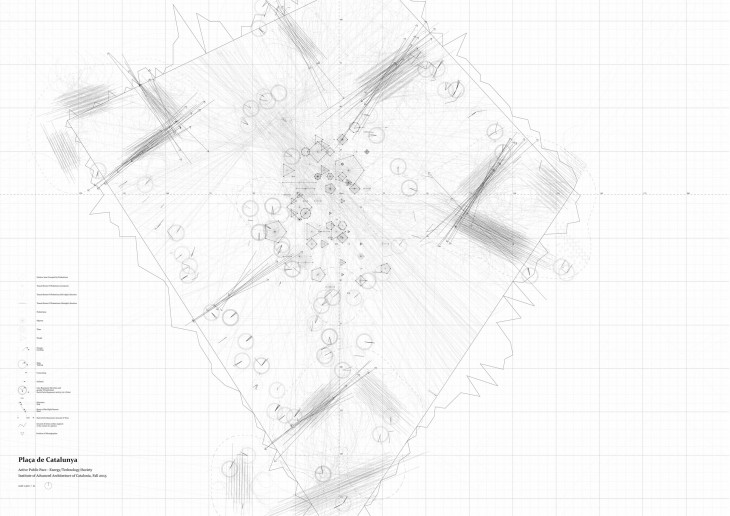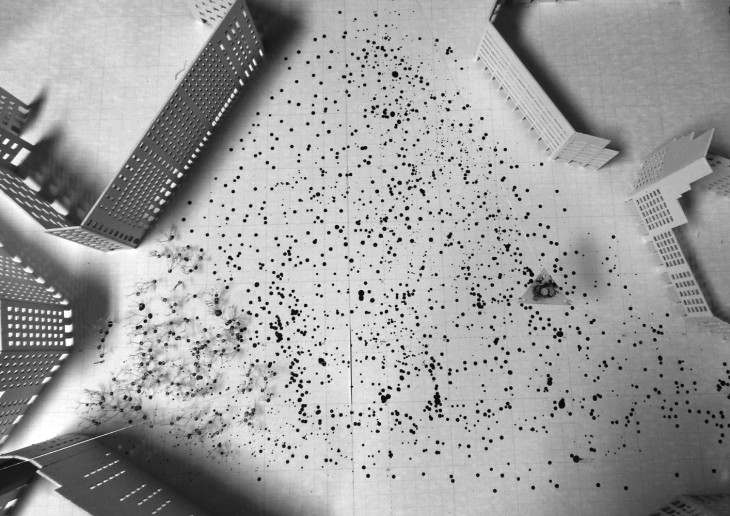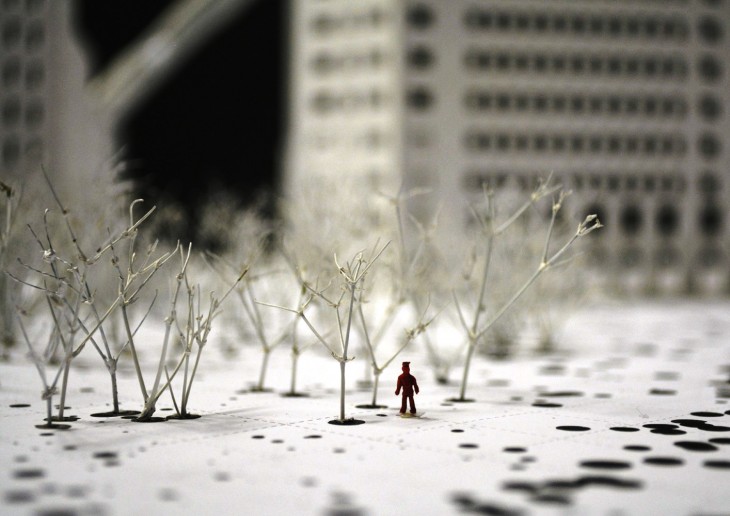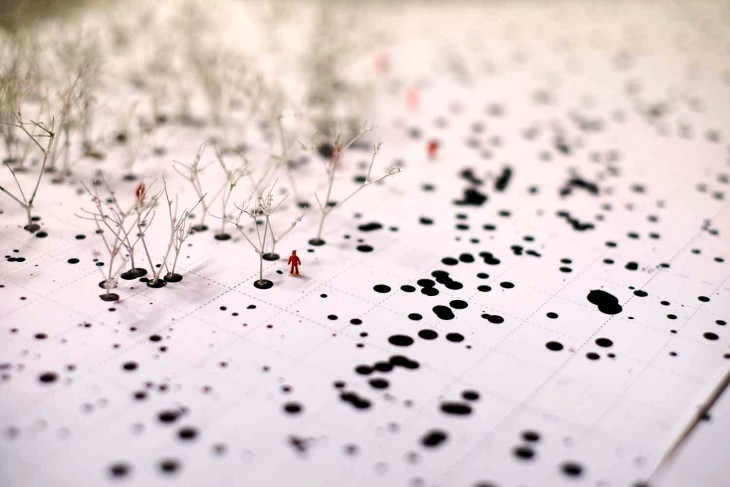Could Plaza Catalunya, the main transition point of Barcelona, become an active urban forest through the use of solar movement as an input to create reactive landscapes for the leisure of the local and tourist people?
Before the 19th century Plaza Catalunya was a market place outside of the city walls of Barcelona. In 1859 after demolishing the walls it officially became a part of Barcelona. Ever since it has become an urban core of the city. The Plaza is surrounded by the city’s biggest department stores, restaurants and hotels. The plaza is frequently used for festivals and protests, and is famous for being the only place in the city where one can feed the pigeons.
During our research on the functioning of Plaza Catalunya we drew an important conclusion. Plaza Catalunya is a place that everyone in Barcelona passes a lot, but no one ever really goes to (except for the
tourists). We think this is a huge short-coming to such a central place, with such a big surface (approximately 50,000 square meters).
The main reasons the plaza is not considered to be a place to spend the day, is the high density of cars and buses driving around it, with all their noise and pollution. Another conclusion we drew, is that the original vision behind the plaza, to create a connection between the old and the new part of the city clearly failed. For example Most people that have to cross from passage de Gracia to la Rambla will walk around the plaza. The main reason for this, is the difference in high between the two sides of the plaza. But here again the enormous amount of cars passing the Plaza play an important role.

ActivePublicSpace – Plaza Catalunya – Activity map
These two general conclusions brought us to the following proposal:
Plaza Catalonia will become a place where both local and tourist people want to spend their time, instead of only a transition place. To achieve this goal, all the car traffic will move, to make room for a big recreational public space. Because of the big variety of activities that will happen on plaza catalunya, the
square will need to be adaptive to function in an ideal way. This adaptivity will be created by implementing an urban forest, using 500 moving trees. The position and the angle of the sun are of great influence to what happens and can happen on the plaza. For this reason the trees will move according to the movement of the sun. The main goal behind the moving trees will be to create pleasant and practical spaces, barriers and visibility. This active process will be ongoing throughout the entire year. We have decided to work with trees due to the follow in unique variety of properties.
We will use the movement of the trees as a tool that open and close creating barriers, visibility, and shadows, we will create changeable spaces,
- They will create a connection with nature,
- They will turn Co2 in to O2,
- Their color and smell will change through the seasons,
- They create pleasant shadows.


Imprimir

This transformation will change the plaza from a polluting traditional and static intersection, to a green advanced and adaptive public space. It will not only have a positive effect on the surrounding neighborhoods, and connect the surrounding parts, but it will have great impact on the entire image of Barcelona. This change could be an example for the start of a new era, where the car, as we know it now will get replaced by public transport, and other more green solutions like the bike.
IAAC, Active Public Space ,Plaza Catalunya,Barcelona.
MAA-01,2015-16.
Dynamic Urban Forest
Students:
- Dirk van Wassenaer
- Lina Salamanca
- Levit Arroyo
- JengRung Hong
- Catherine Simakova
- Sidharth Kumar
- Goutham Santhanam
- Khushboo Sonigera
- Vishnu Jadia
- Naitik Shah
Faculty:
- Edouard Cabay (Introductory Studio Tutor)
- Rodrigo Aguirre (Introductory Studio Assistant)